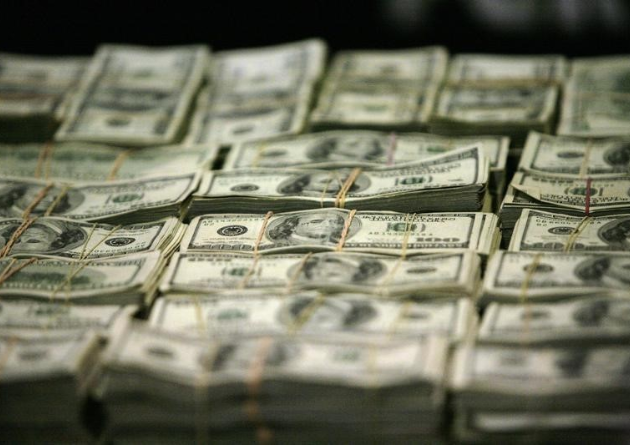Gold Prices Firm as Post-NFP Dollar Rally Eases Amid Rising US Fiscal Concerns

- rabeelrana
The price of gold (XAU/USD) found support during the Asian session on Friday, stabilizing after a modest pullback from a one-and-a-half-week high reached the previous day. The recovery in gold prices comes despite stronger-than-expected US employment data, which dampened hopes for a July interest rate cut by the Federal Reserve.
The US Bureau of Labor Statistics reported on Thursday that Nonfarm Payrolls rose by 147,000 in June, surpassing forecasts of 111,000. Additionally, the unemployment rate declined to 4.1% from 4.2% in May. These figures fueled expectations that the Fed may delay easing monetary policy, contributing to a short-term rally in the US Dollar, which touched a one-week high.
However, wage growth figures were more moderate, with Average Hourly Earnings increasing by 0.2% in June—down from 0.4% previously—while annual earnings growth eased to 3.7% from 3.8%. The softer wage data helped temper inflation concerns and maintained the possibility of two 25 basis point rate cuts later this year.
Despite the stronger labor market data, investors remain cautious amid ongoing fiscal and geopolitical uncertainties. President Donald Trump’s comprehensive tax-cut and spending legislation passed Congress on Thursday, with the Congressional Budget Office estimating it will add $3.4 trillion to the national debt. Concerns over long-term fiscal sustainability have weighed on the US Dollar, offering support to gold as a safe-haven asset.
Moreover, market sentiment remains fragile ahead of Trump’s expected communication with trading partners regarding tariff rates. With a July 9 deadline approaching for potentially higher reciprocal tariffs, geopolitical tensions remain elevated, further underpinning demand for gold.
Trading volumes are expected to remain subdued due to the US Independence Day holiday, encouraging a cautious approach among market participants. Nonetheless, gold is poised to end a two-week losing streak, supported by a favorable macroeconomic backdrop and ongoing investor demand for safe-haven assets.
Share this post
Dollar Firms as Geopolitical Tensions Rise

- rabeelrana
The U.S. dollar edged higher on Monday as investors sought safety amid rising geopolitical tensions in the Middle East. However, the relatively restrained moves across currency markets suggest traders are in a holding pattern, awaiting Iran’s response to recent U.S. airstrikes on its nuclear facilities.
The most notable reaction was seen in the oil market, where crude prices surged to a five-month high following the strikes and comments from U.S. President Donald Trump, who hinted at the possibility of regime change in Iran. Meanwhile, global equity markets retreated as the conflict introduced renewed uncertainty for investors.
In foreign exchange markets, the euro slipped 0.33% to $1.1484, whiles the Australian dollar — often viewed as a proxy for global risk sentiment — dropped 0.67% to a one-month low of $0.6408. The dollar index, which measures the greenback against a basket of six major currencies, rose 0.12% to 99.037. Sterling also weakened, down 0.26% at $1.3416, while the New Zealand dollar fell 0.68% to $0.5926.
The U.S. dollar also gained against the Japanese yen, climbing 0.52% to 146.81 after touching a one-month high earlier in the session. The move put pressure on other Asian currencies, including the Indonesian rupiah, Malaysian ringgit, and Philippine peso.
Strategists at Bank of America noted that the USD/JPY pair could climb further if oil prices remain elevated, citing Japan’s heavy reliance on Middle Eastern energy imports, which account for over 90% of its petroleum needs. In contrast, the U.S. is largely energy self-sufficient. “USD/JPY offers a potential hedge against further geopolitical escalation, with the added benefit of positive carry,” the bank said.
Iran responded to the U.S. strikes by vowing to defend itself. The strikes, involving 30,000-pound bunker-buster bombs, targeted the mountainous region above the Fordow nuclear facility. In the U.S., the attacks sparked anti-war protests, even as government officials urged Iran to avoid further escalation.
In a potentially disruptive move, Iran’s parliament approved a proposal to close the Strait of Hormuz — a critical chokepoint for global oil flows, where nearly 25% of the world’s crude shipments pass through narrow waters shared with Oman and the UAE.
Despite the heightened tensions, markets appear to be treating the U.S. strikes as a contained event rather than the onset of a broader regional conflict. Although the dollar has regained some of its safe-haven appeal amid the geopolitical uncertainty, its modest gains reflect investor caution. Market participants appear hesitant to fully commit to the greenback until the situation becomes clearer.
